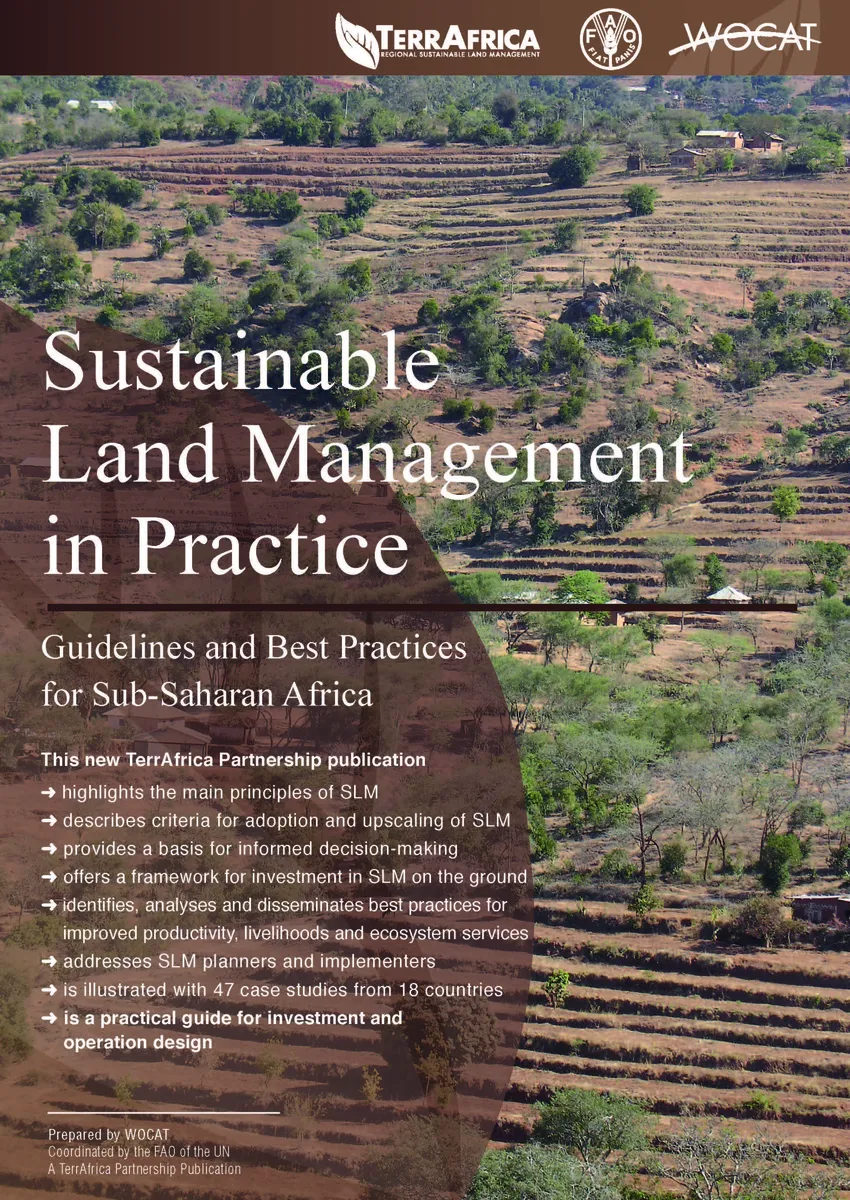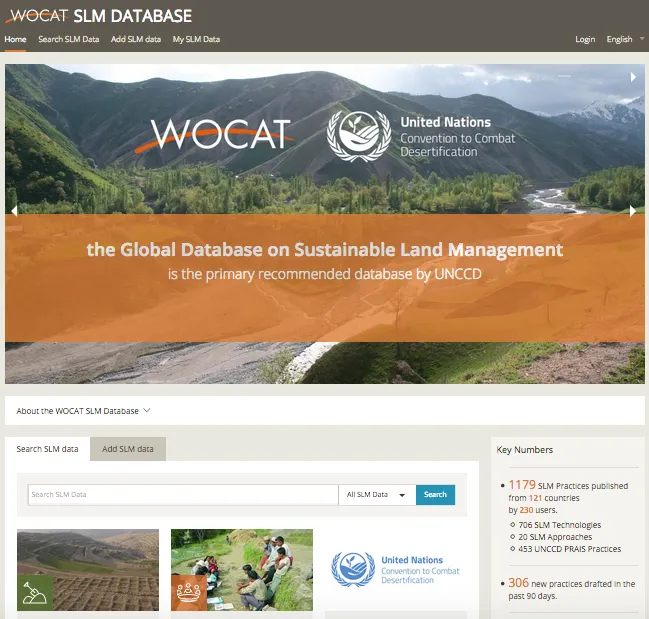Sustainable Land Management in Practice - Guidelines and Best Practices for Sub-Saharan Africa
The publication ‘Sustainable Land Management in Practice - Guidelines and Best Practices for Sub-Saharan Africa' is a TerrAfrica Partnership Publication which has been prepared by WOCAT and coordinated by the FAO of the UN.
The document highlights the main principles of SLM, identifies and analyses best practices for improved productivity, livelihoods and ecosystem services and offers a framework for investment in SLM on the ground. It is illustrated with 47 case studies from 18 countries.
Production of guidelines for best sustainable land management (SLM) technologies and approaches in Sub-Saharan Africa (SSA) has been part of TerrAfrica’s programme during 2009-2010. These guidelines and case studies are intended to help create a framework for investment related to SLM in SSA. The particular aim of these guidelines is to identify, analyse, discuss and disseminate promising SLM practices - including both technologies and approaches - in the light of the latest trends and new opportunities. The focus is, in particular, on those practices with rapid payback and profitability and / or other factors that drive adoption.
This document is targeted at key stakeholders in SLM
programmes and projects at the design and implementation stages,
including practitioners, managers, policymakers, planners, together
with, financial and technical institutions, and donors. The guidelines
are divided into two main parts. Part 1 highlights the main principles
behind SLM, and what considerations are important for technologies and
approaches to qualify as ‘best practices’ suitable for upscaling. Part 2
presents twelve groups of SLM technologies as well as a section on SLM
approaches. These are supported by specific case studies. Key resource
persons and experts on SLM in SSA were asked to assist in finalising the
SLM groups and to describe specific case studies. This strives to be a
‘state of the art’ product.
Flyer
Publication
English
French


The practices documented in the publication can also be viewed in the WOCAT Global SLM Database.